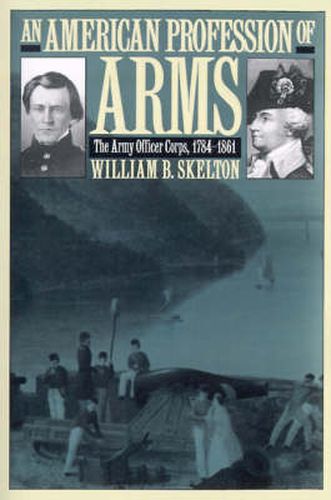Readings Newsletter
Become a Readings Member to make your shopping experience even easier.
Sign in or sign up for free!
You’re not far away from qualifying for FREE standard shipping within Australia
You’ve qualified for FREE standard shipping within Australia
The cart is loading…






This title is printed to order. This book may have been self-published. If so, we cannot guarantee the quality of the content. In the main most books will have gone through the editing process however some may not. We therefore suggest that you be aware of this before ordering this book. If in doubt check either the author or publisher’s details as we are unable to accept any returns unless they are faulty. Please contact us if you have any questions.
Following the formation of a regular army in 1784, a popular distrust of military power and the generally unsettled nature of national administration kept the army in a continual state of fluctuation, both in terms of organization and size. Few officers were making a long-term commitment to military service.
But by 1860, a professional army career was becoming a way of life. In that year, 41.5 percent of officers had served 30 years, compared to only 2.6 percent in 1797.
Historians, while recognizing the emergence of a pre-Civil War professional army, have generally placed the solid foundation of military professionalism in the post-Civil War era. William Skelton maintains, however, that the early national and antebellum eras were crucial to the rise of the American profession of arms.
Although tiny by today’s standards, the early officer corps nevertheless maintained strong institutional support and internal cohesion through a regular system of recruitment, professional training and education, and a high degree of leadership continuity. Through socialization and lengthening career commitments, officers came to share a common vision of their collective role with respect to warfare, foreign policy, Indian affairs, domestic politics, and civilian life.
The result, Skelton shows, was the formation of a distinctive military subculture rooted in tightly knit garrison communities across the frontier and along the seaboard, from which prominent Civil War leaders would emerge and whose essential character would persist well into the twentieth century.
$9.00 standard shipping within Australia
FREE standard shipping within Australia for orders over $100.00
Express & International shipping calculated at checkout
This title is printed to order. This book may have been self-published. If so, we cannot guarantee the quality of the content. In the main most books will have gone through the editing process however some may not. We therefore suggest that you be aware of this before ordering this book. If in doubt check either the author or publisher’s details as we are unable to accept any returns unless they are faulty. Please contact us if you have any questions.
Following the formation of a regular army in 1784, a popular distrust of military power and the generally unsettled nature of national administration kept the army in a continual state of fluctuation, both in terms of organization and size. Few officers were making a long-term commitment to military service.
But by 1860, a professional army career was becoming a way of life. In that year, 41.5 percent of officers had served 30 years, compared to only 2.6 percent in 1797.
Historians, while recognizing the emergence of a pre-Civil War professional army, have generally placed the solid foundation of military professionalism in the post-Civil War era. William Skelton maintains, however, that the early national and antebellum eras were crucial to the rise of the American profession of arms.
Although tiny by today’s standards, the early officer corps nevertheless maintained strong institutional support and internal cohesion through a regular system of recruitment, professional training and education, and a high degree of leadership continuity. Through socialization and lengthening career commitments, officers came to share a common vision of their collective role with respect to warfare, foreign policy, Indian affairs, domestic politics, and civilian life.
The result, Skelton shows, was the formation of a distinctive military subculture rooted in tightly knit garrison communities across the frontier and along the seaboard, from which prominent Civil War leaders would emerge and whose essential character would persist well into the twentieth century.